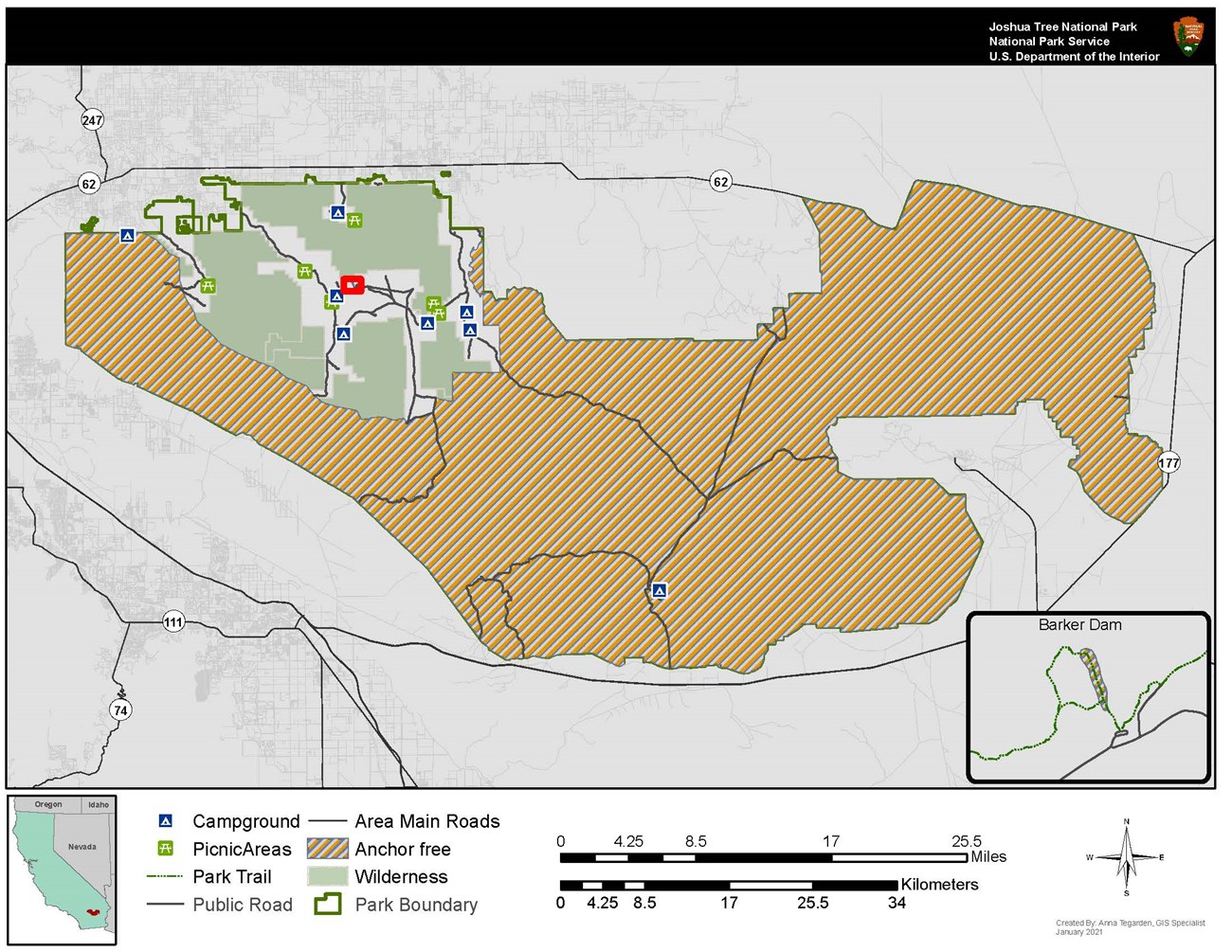|
The National Park Service does not inspect, maintain, or repair fixed anchors and other climbing equipment. A fixed anchor is defined as any piece of climbing equipment that is left in place to facilitate a safe ascent or rappel. Examples include, but are not limited to, bolts, pitons, and slings. The placement, replacement, and removal of fixed anchors requires a permit in all circumstances. The park retains the right to remove bolts in prohibited zones without further notice. The park is actively working on a Climbing Management Plan that could impact bolting regulations. 
NPS map Power DrillsPower drills may not be used without a permit. Fixed Anchor SpecificationsStainless steel hangers and bolts are required. The local climbing community suggests hangers and bolts that are at least three-eights-inch in diameter and two and one-half inches in length. Please minimize visual impacts by camouflaging fixed anchors. Fixed Anchors in Non-Wilderness AreasAs of February 4, 2022, the removal, replacement, and placement of fixed anchors now require a permit for both wilderness and non-wilderness. This applies whether or not handdrills or powerdrills are used to install bolts. Please consider the impacts of new fixed anchors on the quality of existing climbing routes, natural, historical, and archeological resources, and the experience of other visitors. See the information on "How to Get a Permit" below. Fixed Anchors in Wilderness AreasFixed anchors may be replaced, anchor for anchor, in wilderness. A permit is required for the removal, replacement, and placement of fixed anchors in wilderness. To apply for a permit, please see the "How to Get a Permit" section below. Nearly 85% percent of the park is managed as wilderness. Climbers are responsible for knowing where wilderness boundaries are located. If you are unsure about a particular location, contact a park ranger. For National Park Service policy concerning bolting restrictions in wilderness see section 7.2 of Director's Order #41: Wilderness Stewardship. Fixed Anchor-Free ZonesFixed anchors may not be placed or replaced in fixed anchor-free zones. For example, the Barker Dam area, a popular destination for many park visitors, has been designated a fixed anchor-free zone to maintain its aesthetic value for visitors. Fixed anchors may not be placed between the parking lot and the dam. If you wish to place fixed anchors in the surrounding area, make sure to identify the boundaries first. What if I'm interested in rebolting a route that already exists?A permit is still required. To apply to rebolt a route, please follow the steps below under "How to Get a Permit." How to Apply for a PermitApplication for Special Use Permit
Email the application to jotr_special_use@nps.gov. Questions?For questions relating to the laws, regulations, and technical aspects of fixed anchors, please email JOTR_EmergencyServices@nps.gov. |
Last updated: August 31, 2025
